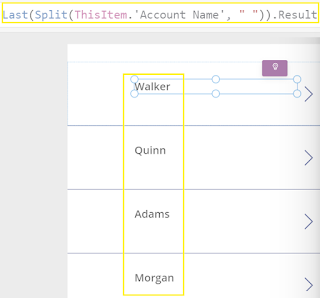Mendix Series
1. Overview of Mendix (this post)
2. Mendix - Part 2 - Diving deeper
Overview: I like Power Platform, but other options exist. Most competitors' products cover a piece of what the Power Platform covers.
 |
| Originally Generated with Thanks to Gareth R. |
Mendix Vs PowerApps:
- Mendix and PowerApps are compared across various criteria. Mendix is suitable for complex, enterprise-grade applications with extensive customisation options but is generally more costly.
- PowerApps is ideal for rapid app development, integrates seamlessly with Microsoft services, and is more cost-effective for smaller projects. Larger projects require premium licenses per user, so PowerApps can become extremely expensive. Once you build many apps and your user base has premium licencing, PowerApps becomes extremely economically viable.
- Mendix scores higher in integration capabilities, scalability, performance, innovation, and accessibility, while PowerApps scores higher in ease of use, development speed, customization, and support and community.
- Many factors affect which low-code tool to use, including what the developers are trained in, how many apps you build and support over the next 3-5 years, and what licences and technology stacks your business currently has. Getting Canvas app developers is far easier and cheaper than getting Mendix developers and experts.
- A common scenario for businesses that use Mendix is having Office 365 E5 plans; then, it is about picking the right technology for the right project.
- Mendix excels in Factory and manufacturing applications.
 |
| Mendix Studio Pro version 10.x |
Mendix: I have used Mendix a fair amount and like the product. Mendix is straightforward, logical and easy to learn.
Cons:
- The publishing is very slow.
- For the free version, you have to use the Mendix subdomain. The basic plan is $50/month for my small demo. The cost of a Mendix licence and hosting is high for a one-off project; therefore, it is more suitable for building medium-sized projects.
- Each app has a separate database, which needs to be managed or, in the cloud-hosted scenario, does not allow direct access except via backups or REST OData API's. You can build multiple front ends, but this is more of a workaround than a good idea.
- For decent ALM, follow Mendix guidance as it is tightly coupled to the IDE/dev process.
- Building many apps/gap-filling apps, as well as large complex apps, can overwhelm Mendix.
Outsystems is the other recognised leader in the Low-code space. Its focus, to me, is on building large, complex solutions faster using low code.
Outsystems focuses on Low code for large enterprise systems. It is big on flows like Mendix to build logic, but unlike Mendix, which only allows custom Java code in widgets, Outsystems allows custom code in multiple languages to be integrated.
Outsystems can use either SQL Server or Oracle for its main data store. Similar to Mendix, Outsystems can expose REST APIs via automatic generation. Both products are good at consuming APIs.
Both systems allow for MFA IDP SSO authentication. Data is encrypted at rest and in transit by default. Both have many compliance standards, such as ISO and GDPR.
I like the way Outsystems can use AAD Security Groups; Mendix can be awesome, but it's not my favourite.
I'd choose Outsystems if I were building a large, complex system using low code over Mendix, assuming no in-house skills in either.
Airtable: Has lots of templates and easily connects to various data sources. Easy to extend or build apps on the platform. Provides storage and low-code apps. It's like having Dataverse and Power Apps. There are pre-built templates to get the team off to a start.
Nintex: Bought K2 and have a long history in workflows (workflows for SharePoint and O365), screen/form generation and form building. If your company uses Nintex, it's worthwhile, but I wouldn't use it for new projects or if the team does not have significant experience.
UiPath is an RPA tool that is strong for automation. UiPath is ahead of Power Automate Desktop (PAD) from a desktop automation and recording perspective. Both UiPath and Power Automate allow for attended and unattended runs. PAD is part of Power Automation Premium or Power Automate Process licences. Automation Anywhere and Blue Prism are other prominent players in the RPA space.
Postman Workflows: It's a dark horse, but people love Postman, and this may become an interesting option for Rapid development.
Amazon: AWS has various services that allow for Low-code solutions. "Amazon Honeycode" is model-driven, and Canvas apps can call code running as a service, i.e., Lambda's, which is the same service as Azure Functions on AWS. AWS Honeycode has predefined templates as starting points, which is more like Salesforce's low-code approach. This allows the developer to break out and write complex logic or persist the database in S3 storage. "Amazon QuickSight" works like Power BI to report on solution data.
Salesforce Lightening: Allows for the building of custom apps and the utilisation of Salesforce CRM and its data.
Retool: Good set of connectors for APIs.
Appian: This drag-and-drop UI is for rapid development. It has RPA built in. I hear it's not super easy for non-tech staff, and customisation can be difficult. It is aimed at enterprises, so cost and performance need to be watched. There is no native database; probably only if a business is already into Appian would I stick with it.
Further out competitors:
Windsuft.io
Mendix Series
1. Overview of Mendix (this post)
2. Mendix - Part 2 - Diving deeper




















